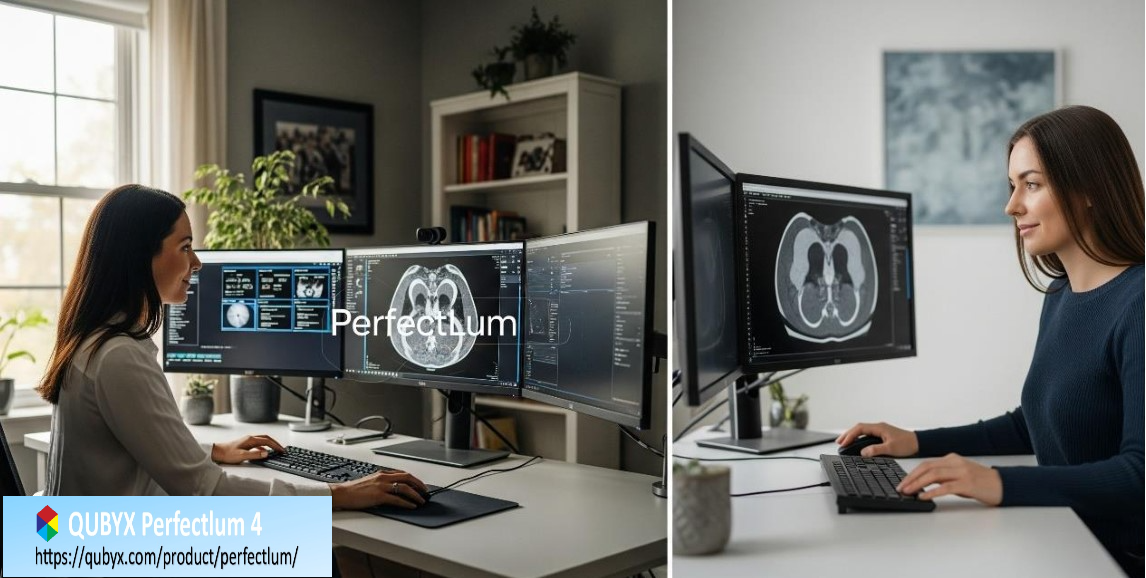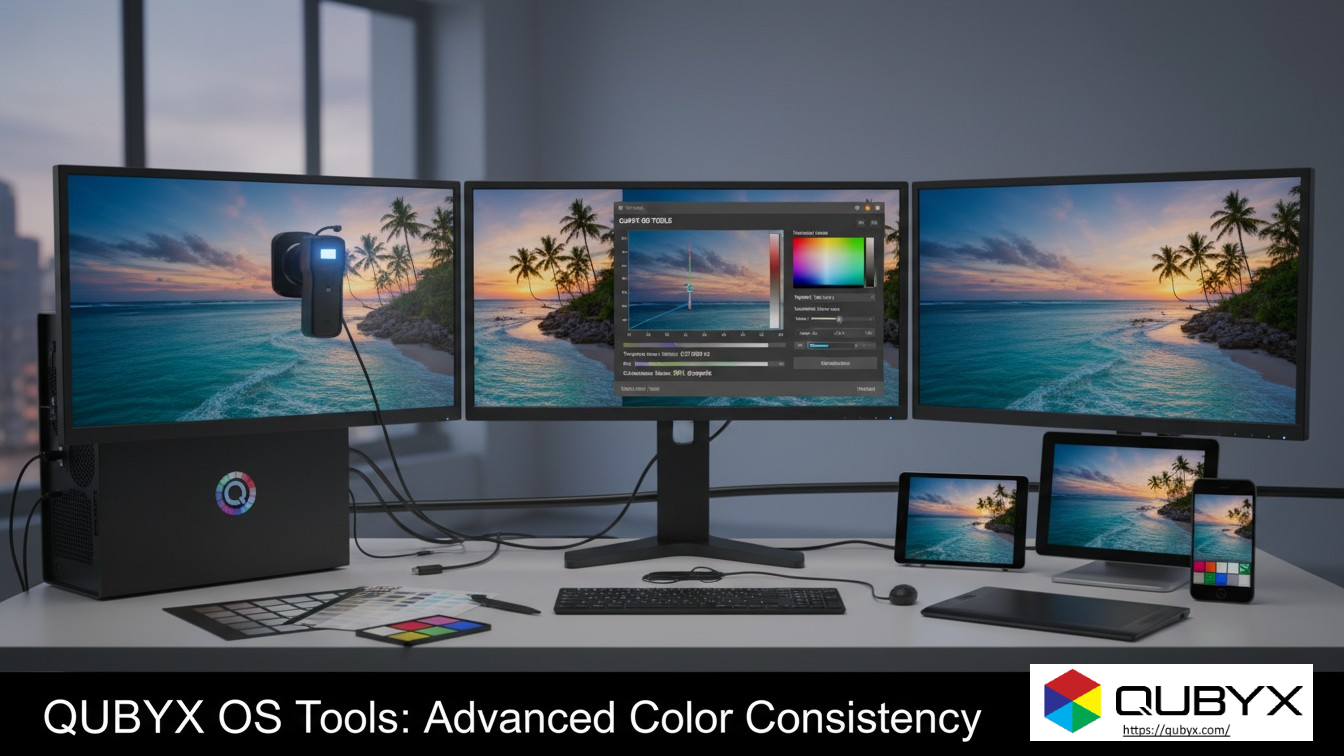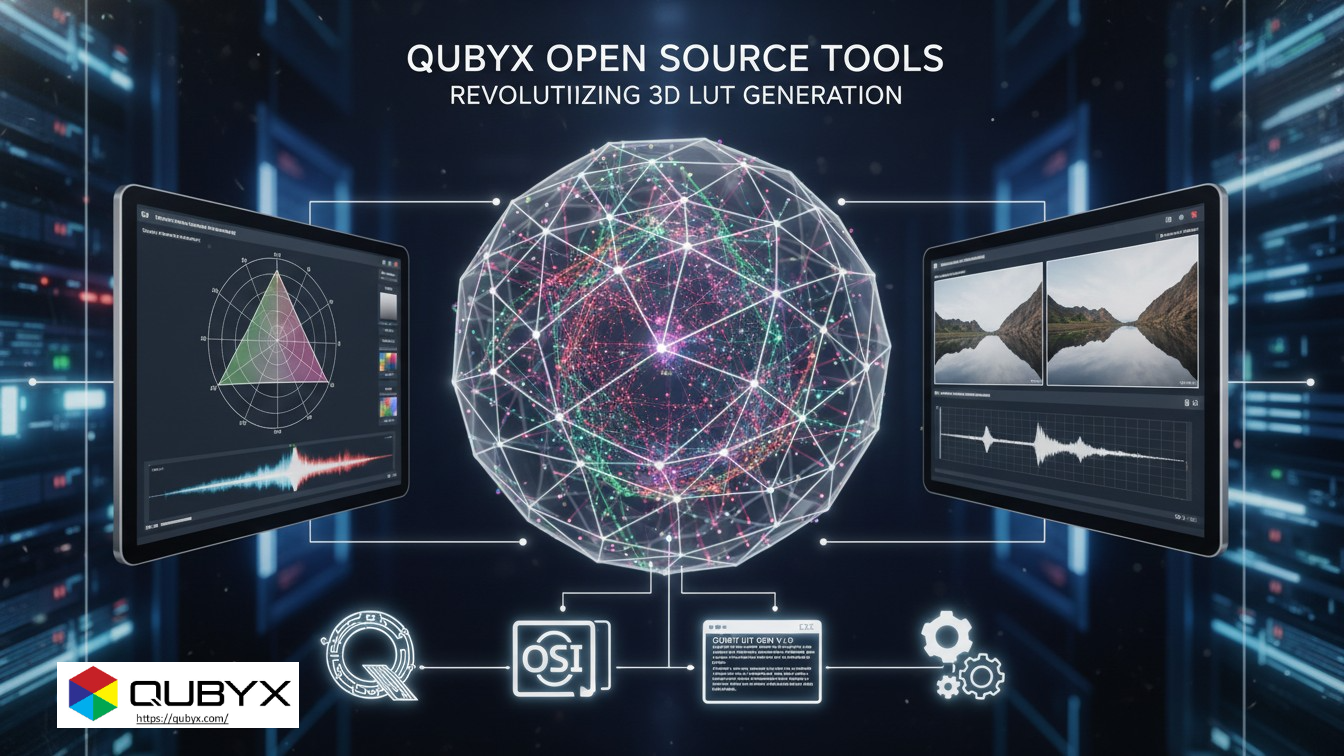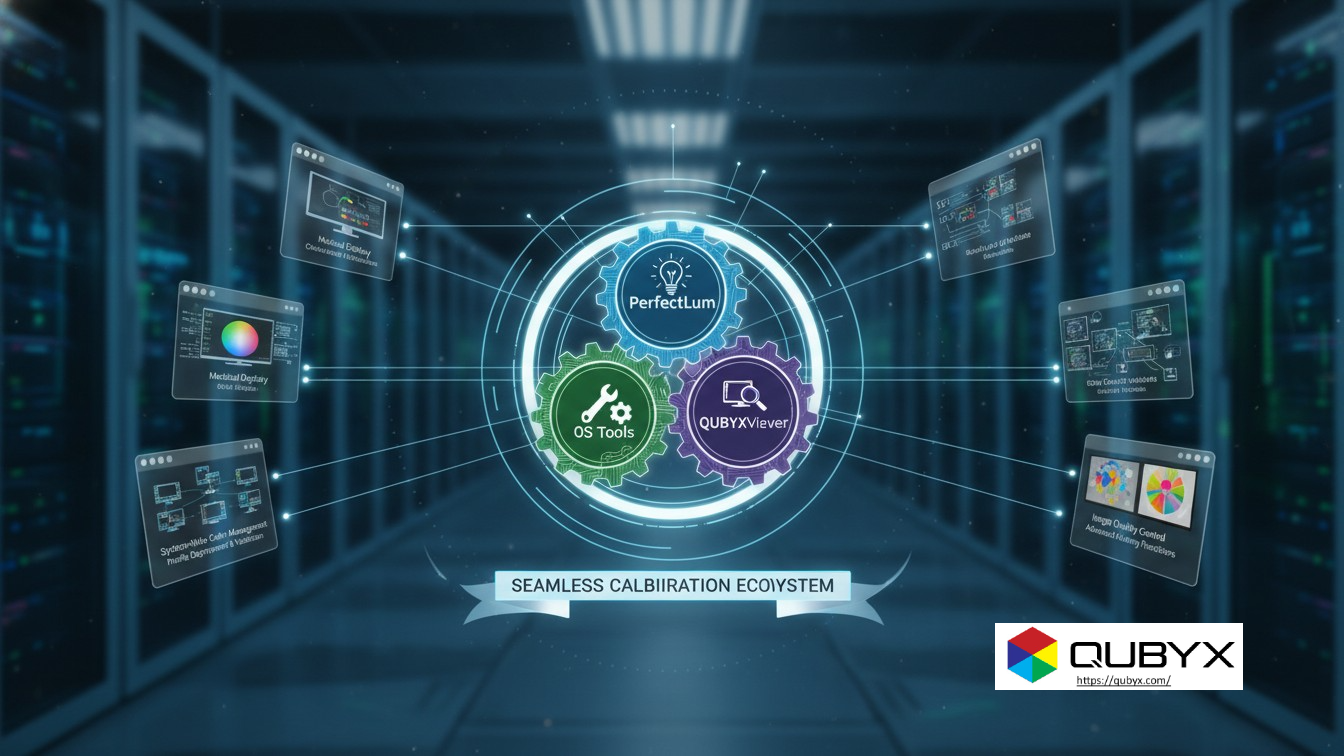News
- Home
- Top Diagnostic Confidence at Home | How PerfectLum Helps Teleradiologists Maintain Hospital-Grade Accuracy

Top Diagnostic Confidence at Home | How PerfectLum Helps Teleradiologists Maintain Hospital-Grade Accuracy
- August 11, 2025
- Shamsul
Diagnostic Confidence at Home with PerfectLum
When a radiologist reads studies from home, image quality and display consistency can’t be left to chance. Subtle grayscale differences—those tiny steps between near-black tissues and faint lesions—often decide whether a case is escalated, monitored, or cleared. That’s why the gold standard for teleradiology isn’t just fast connectivity; it’s hospital-grade image fidelity and Diagnostic Confidence on every remote workstation.
PerfectLum is built for exactly this reality. It brings medical-display calibration, automated QA, and compliance-ready documentation to home offices—so teleradiologists can trust what they see, case after case.
Why “Good Enough” Isn’t Enough at Home
- Consumer displays drift. Backlight aging, temperature changes, and daily use shift luminance and contrast over time. Without routine checks, what looked “fine” last week can be diagnostically misleading today.
- Ambient light varies. Sunlight at noon, lamp glare at night—home lighting is rarely controlled and can crush shadow detail or wash out highlights.
- Mixed hardware stacks. Many remote readers split time between a medical-grade display and a high-end consumer monitor. Without proper calibration and verification, grayscale consistency suffers.
- Audit pressure. Facilities are still responsible for image-quality QA across their remote network. If a case is questioned, they need calibration logs and conformance reports—on demand.
Bottom line: Diagnostic confidence at home requires the same calibration rigor you expect inside the hospital.
What PerfectLum Brings to Teleradiology
1) DICOM GSDF Calibration You Can Trust
PerfectLum aligns your display to the DICOM Grayscale Standard Display Function (GSDF), ensuring consistent perceptual steps across the entire luminance range. This improves visibility of low-contrast structures and stabilizes your “visual baseline” from morning to night.
2) Automated Acceptance & Constancy Tests
QA routines help you to run acceptance tests (for the new or other monitors) and constancy tests (periodic checks to detect drift). You can standardize its intervals (e.g., weekly quick checks, quarterly or monthly full tests) and implement them across every remote workstation and get Diagnostic Confidence.
3) Drift Alerts and Self-Healing Schedules
PerfectLum continuously monitors display performance. If luminance or grayscale starts to deviate from the target, drift alerts notify the reader (and admin, if configured). You can also schedule auto-calibration outside reading hours so the display stays within spec—without interrupting clinical work.
4) Web-Based QA & Centralized Oversight
With PerfectLum Web QA, a single dashboard tracks Diagnostic Confidence compliance across your distributed fleet. Admins can:
- See pass/fail status by user, device, and site
- Push calibration policies and testing frequencies
- Collect, export, and archive reports for audits
- Remotely trigger checks or remediation steps
5) Ambient Light Guidance
PerfectLum helps evaluate ambient illumination and glare conditions. It guides users to acceptable ranges, reducing contrast washout and keeping the perceived grayscale closer to calibrated intent.
6) Works with Medical-Grade and Prosumer Monitors
Many teams pair medical-grade displays with high-brightness prosumer panels. PerfectLum helps apply consistent targets—so a study interpreted on a secondary screen won’t undermine Diagnostic Confidence certainty.
The At-Home Diagnostic Confidence Workflow
Step 1: Baseline Setup
- Connect a supported colorimeter.
- Run DICOM GSDF calibration to set target luminance, black level, and gamma response.
- Document acceptance outcomes and store the report centrally.
Step 2: Environment Check
- Use the marginal light test to assess your room.
- Adjust blinds, distance from windows, or task lighting until readings fall in the recommended range.
- Save a quick guide for your specific room (day vs. night tips).
Step 3: Reading-Day Routine
- Enable a pre-shift quick check (1–2 minutes).
- If the device passes, start reading; if it fails, auto-calibrate or switch to a backup display while calibration runs.
Step 4: Scheduled Constancy Tests
- Set weekly or periodically constancy checks to catch drift early.
- Configure drift alerts so you’re notified before performance compromises diagnostic detail.
Step 5: Continuous Oversight
- Your QA lead monitors Web QA for compliance trends.
- Non-conformant devices trigger remediation tasks (e.g., recalibration, service check, or ambient light correction).
Step 6: Audit-Ready Reporting
- Keep time-stamped calibration logs, device IDs, targets, and results in one place.
- Export PDF summaries when an auditor (or internal quality review) asks for proof.
What This Means for Teleradiologists
- Consistent lesion visibility. Calibrated GSDF makes faint findings reproducible across sessions and screens.
- Lower cognitive load. When your display behaves predictably, you spend less effort compensating for “iffy” grayscale—and more on clinical reasoning.
- Defensible decisions. Structured QA plus traceable logs help demonstrate due diligence if clinical outcomes are reviewed.
What This Means for Imaging Leaders
- Policy you can enforce remotely. Standardize GSDF targets, test frequency, and pass/fail thresholds—then verify adherence across the network.
- Risk reduction. Early detection of drift reduces the chance of missed low-contrast findings.
- Smooth inspections. When regulators or accreditors visit, you can produce calibration history in few minutes, not days.
Practical Tips for a Hospital-Grade Diagnostic Confidence at Home Setup
- Choose a capable display. Target high, stable luminance (e.g., ≥350 cd/m² for general diagnostics; follow your modality/policy).
- Control the room. Matte surfaces, Neutral wall color, and consistent lighting minimize glare and reflections.
- Calibrate on a schedule. Start with monthly (or as mandated) constancy checks; increase frequency if your device shows faster drift.
- Measure ambient light. Re-check seasonally—winter vs. summer sunlight patterns can change your room’s behavior.
- Standardize targets across devices. If you read on multiple screens, align to the same GSDF target so cases look the same everywhere.
- Keep peripherals stable. Avoid hot-plugging docks/adapters mid-shift; small signal chain changes can alter effective luminance or tone mapping.
- Document everything. In QA, it will document everything. PerfectLum’s reports make this painless.
Commonly Asked Questions
Q: Can PerfectLum keep my home monitor aligned for Diagnostic Confidence without me babysitting it?
Yes. Use scheduled auto-calibration (e.g., overnight) and drift alerts. You’ll be notified only if something needs attention.
Q: What if I read on two different displays?
Calibrate both to the same DICOM GSDF target and run the same constancy checks. PerfectLum helps keep them visually consistent.
Q: How do we prove compliance for remote readers?
The Web QA dashboard collects pass/fail results, calibration logs, device metadata, and timestamps. Export reports when needed.
Q: Does ambient light really matter?
Absolutely. Excess ambient light reduces perceived contrast and can hide subtle findings. Use PerfectLum’s guidance to stay within specified ranges.
The Takeaway
Remote work shouldn’t mean remote standards. With DICOM-accurate calibration, automated QA, continuous drift monitoring, ambient-light guidance, and centralized reporting, PerfectLum gives teleradiologists hospital-grade diagnostic confidence at home—and gives imaging leaders the oversight and documentation they need to stay compliant and audit-ready.
Read More:
Related Posts
- December 1, 2025
- News
How QUBYX OS Tools Deliver Next-Level Color Consistency The Hidden
- November 30, 2025
- News
Open-Source Tools for Medical Display QA: Why QUBYX Leads the
- November 29, 2025
- News
How QUBYX Open Source Tools Revolutionize 3D LUT Generation




